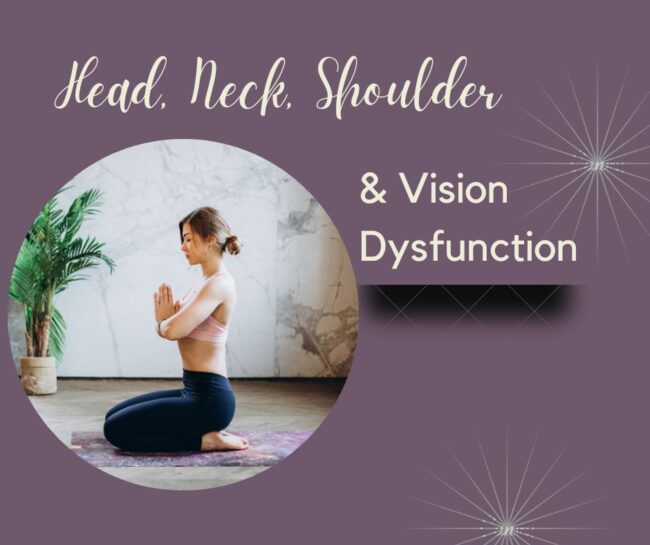Head Neck Shoulder and Vision
Patients are often surprised that sensory motor information from the head, neck, and shoulder can affect vision. This week we had several patients in the office who we sent out for manual support since these patients were experiencing double vision resulting from a tilted head sitting on an unstable head-neck-shoulder platform.
There are several reflexes that help keep the vision stable as the body or head is moving. This includes:
– cervico-ocular reflex (COR) – eye stabilizing movements in response neck rotation
– vestibulo-ocular reflex (VOR) – eye movements that move opposite to head movement (response to changes in the vestibular balance system in the ears)
– optokinetic reflex (OKR) – reflex of eyes that follow in the direction of the moving object (like following a train)
Disruption to these reflexes that we commonly see in our brain injury patients can result in symptoms of dizziness, disorientation, motion sickness, and poor balance despite many of them being able to see well. There are many visual skills that help us function despite 20/20.
Why is posture important?
In a perfect world, clear comfortable single vision occurs when the eyes can freely move independently, but more importantly eye team together (point to the same place at the same time). For sustained task at near such as reading or computer work, this requires visual stamina, eye focusing, and consistent eye teaming. Fatigue in any of these skills can result in blurry or double vision or visual discomfort and headaches.
One of the primary roles of the visual system is to provide the brain with a sense of orientation of the head relative to the body. There are actual sensory receptors in the eye muscles that provide proprioception (a sense of awareness to the position or movement) back to the body. If you place your thumbs gently on the back of your neck under your skull then over eyes rapidly side to side, you will feel contraction of your neck muscles. So visual dysfunction can also lead to symptoms of headache and neck pain.
Patients who are more prone to vision difficulties from head, neck, shoulder problems include those who have experienced a whiplash injury from a car accident and also those who have poor posture from long hours spent at their desk. We have patients reporting 15 hours daily on their computer! Computer vision syndrome can be a real pain.
Our solution for head, neck, shoulder vision dysfunction is multi-fold:
– Take visual breaks! Remember 20/20/20. Looking at something 20ft + for 20 seconds for every 20 minutes of near work. Move the eyes!
– Take physical breaks to minimize strain on our neck and shoulders. Our bodies are built for movement and not a sedentary lifestyle. Stretch and move that body! Many of our patients have excellent physical support from their therapists, chiropractors, gym trainers.
– Optimize eyewear for comfort and function for prolonged computer work and reading. This sometimes involves a separate pair of glasses, prism glasses, and/or specific coatings or tints.

